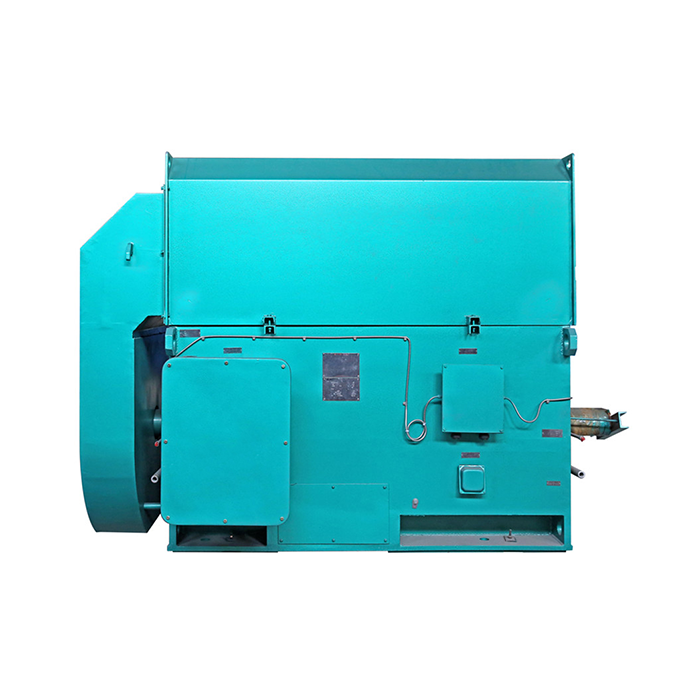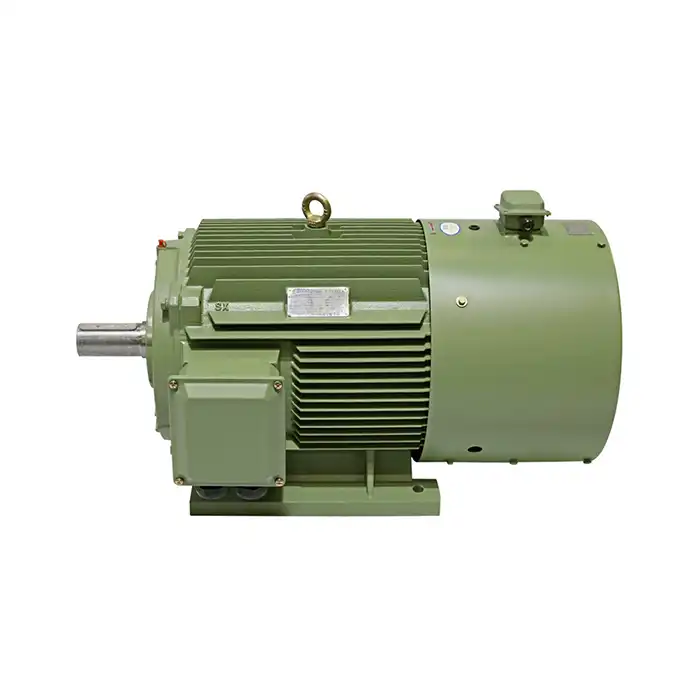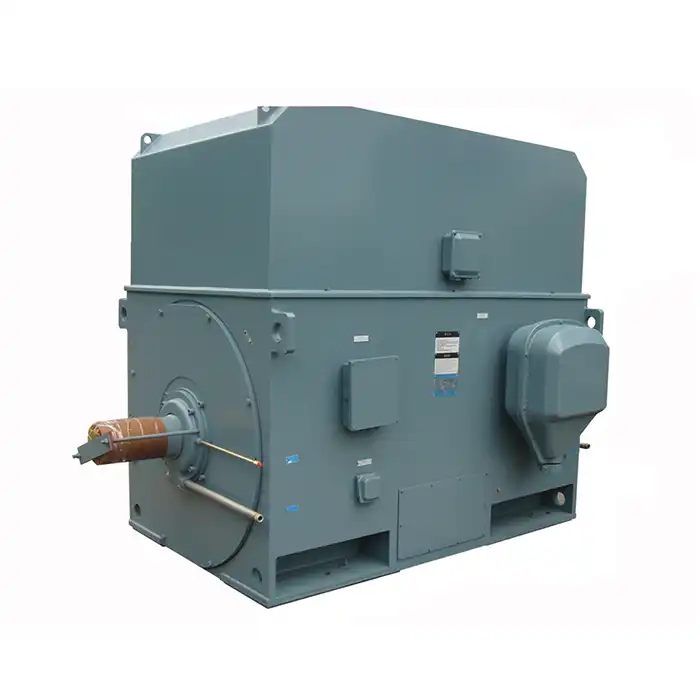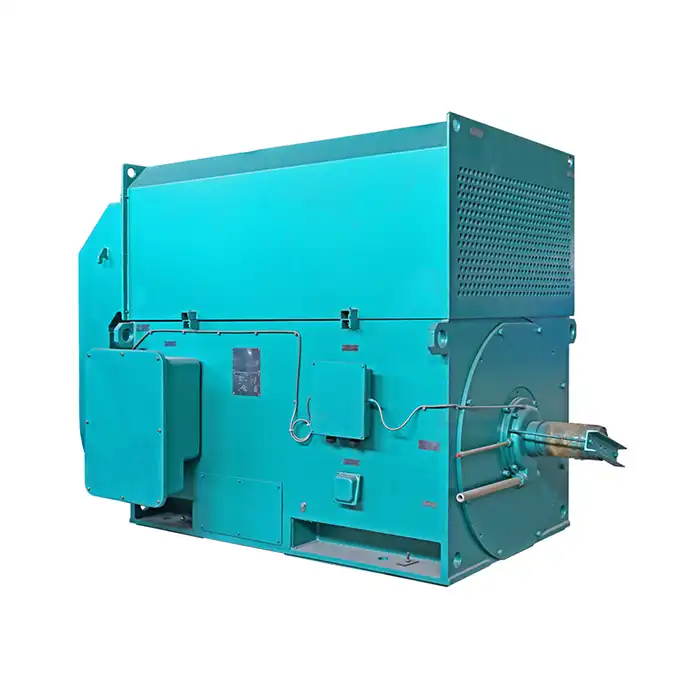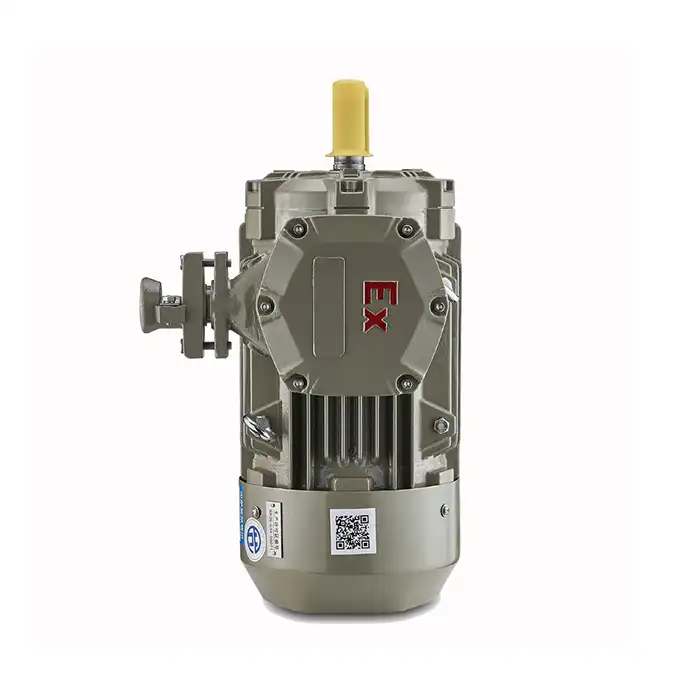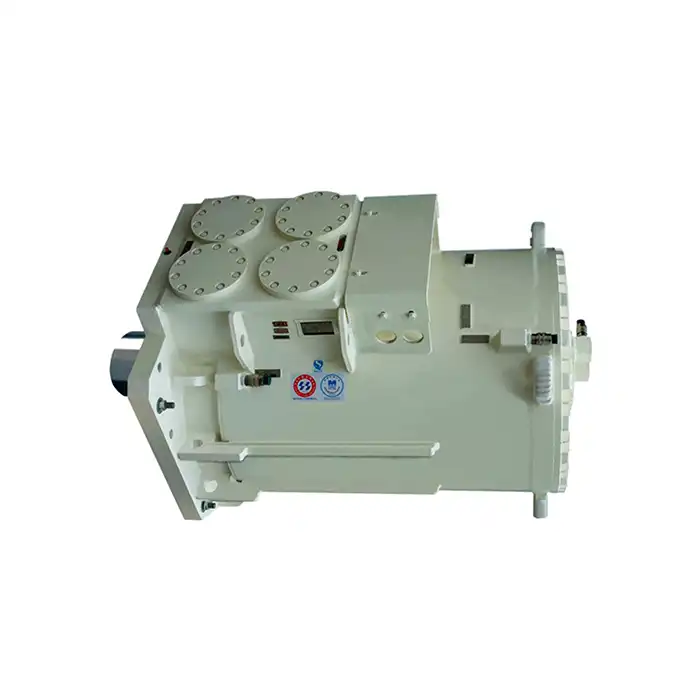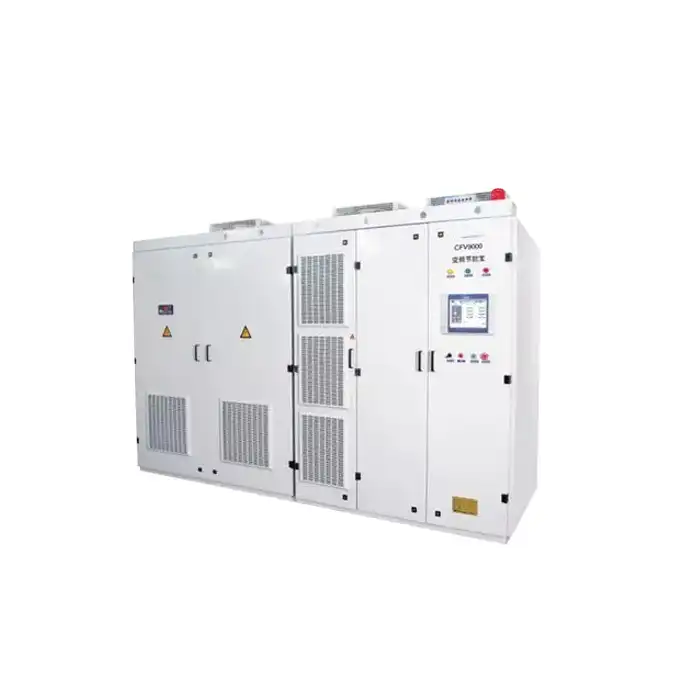Regular Inspection Protocols for Exde Motors
Regular inspections are essential to maintain the integrity and safety of exde motors. These inspections help identify potential issues before they escalate into serious problems, ensuring the continued safe operation of the motor in hazardous environments.
Visual Inspections
Visual inspections are the first line of defense in maintaining the product compliance. These should be conducted regularly, ideally on a weekly or bi-weekly basis, depending on the operating conditions and frequency of use.
- Check for visible damage to the motor housing, including cracks, dents, or corrosion
- Inspect cable entries and glands for proper sealing and signs of wear
- Examine the motor's nameplate to ensure all markings are legible and intact
- Look for any signs of overheating, such as discoloration or melted components
Electrical Testing
Periodic electrical testing is crucial to verify the motor's internal components are functioning correctly and maintaining their explosion-proof integrity.
- Conduct insulation resistance tests to check for deterioration in the motor's windings
- Perform continuity tests on all grounding connections
- Check for proper functioning of thermal protection devices
- Verify the correct operation of any installed monitoring systems
Mechanical Inspections
The mechanical aspects of an exde motor are equally important in maintaining its explosion-proof capabilities.
- Check bearing condition and lubrication levels
- Inspect shaft seals for wear and proper alignment
- Verify the tightness of all bolts and fasteners
- Examine cooling fans and air passages for blockages or damage
Documentation Requirements for Hazardous Area Installations
Proper documentation is not just a regulatory requirement but also a crucial aspect of maintaining safety and compliance when using exde motors in hazardous areas. Comprehensive and up-to-date documentation helps ensure that all personnel involved in the installation, operation, and maintenance of these motors have access to critical information.
Equipment Certificates
All the products used in hazardous areas must have valid certification documents that prove their compliance with relevant standards.
- Maintain copies of ATEX or IECEx certificates for each exde motor
- Ensure certificates are readily available for inspection by regulatory authorities
- Verify that the certification matches the area classification where the motor is installed
Installation Records
Detailed records of the installation process are essential for future reference and compliance checks.
- Document the exact location and mounting details of each exde motor
- Record all electrical connections, including cable types and gland specifications
- Maintain a log of any modifications or repairs made during installation
Maintenance Logs
Keeping thorough maintenance records is crucial for tracking the condition of exde motors over time and ensuring ongoing compliance.
- Create and maintain detailed logs of all inspections and maintenance activities
- Record any parts replacements or repairs, including dates and technician information
- Document the results of electrical and mechanical tests performed on the motor
Risk Assessments
Conducting and documenting risk assessments is a critical step in ensuring the safe operation of exde motors in hazardous environments.
- Perform and document detailed risk assessments for each exde motor installation
- Identify potential hazards and implement appropriate control measures
- Regularly review and update risk assessments to reflect any changes in operating conditions
Training Staff on Exde Motor Safety Procedures
Proper training is essential to ensure that all personnel working with or around exde motors understand the unique safety requirements and procedures associated with these specialized motors. A well-trained staff is key to maintaining compliance and preventing potential incidents in hazardous areas.
Basic Explosion Protection Principles
All staff should have a fundamental understanding of explosion protection concepts and how they apply to the product.
- Provide training on the basics of explosion protection and area classification
- Explain the principles behind Exd (flameproof) and Exe (increased safety) protection methods
- Discuss the specific features of the product that contribute to their explosion-proof nature
Safe Operating Procedures
Develop and implement comprehensive training programs on the safe operation of the product in hazardous environments.
- Train staff on proper start-up and shut-down procedures for exde motors
- Provide guidance on monitoring motor performance and recognizing potential issues
- Teach employees how to respond to alarms or unusual motor behavior
Maintenance and Inspection Techniques
Ensure that maintenance personnel are properly trained in the specific requirements for inspecting and maintaining the product.
- Provide hands-on training for conducting visual inspections of exde motors
- Teach proper techniques for electrical testing and mechanical inspections
- Train staff on the correct procedures for documenting maintenance activities
Emergency Response Training
Prepare staff to handle potential emergencies related to the product in hazardous areas.
- Conduct drills on emergency shutdown procedures for exde motors
- Train employees on proper evacuation protocols in case of a hazardous event
- Provide instruction on the use of fire suppression equipment specific to electrical fires
Conclusion
Ensuring compliance when using the product in hazardous environments requires a multifaceted approach that encompasses regular inspections, proper documentation, and comprehensive staff training. By implementing robust inspection protocols, maintaining detailed records, and providing thorough training to all personnel, organizations can significantly reduce the risk of incidents and maintain regulatory compliance.
It's important to remember that compliance is an ongoing process. Regular reviews and updates of procedures, documentation, and training programs are necessary to address changes in regulations, technology, and operational conditions. By staying vigilant and proactive in managing exde motor installations, companies can create safer work environments and protect their assets from potential hazards.
Ultimately, the safe and compliant use of exde motors relies on the combined efforts of management, maintenance personnel, and operators. By fostering a culture of safety and continuous improvement, organizations can maximize the benefits of using these specialized motors while minimizing risks in hazardous areas.
Choose XCMOTOR for Your Exde Motor Needs
When it comes to ensuring compliance and safety with exde motors, choosing the right manufacturer is crucial. XCMOTOR stands out as a leading exde motor manufacturer, offering high-quality, reliable motors designed to meet the strictest safety standards for hazardous environments. Our team of experts is dedicated to providing comprehensive support, from product selection to installation guidance and ongoing maintenance advice. By choosing XCMOTOR, you're not just getting a motor; you're gaining a partner committed to your safety and operational success. For more information on our exde motors and how we can help ensure compliance in your hazardous area applications, please contact us at xcmotors@163.com.
References
1. Smith, J. (2022). "Explosion-Proof Motor Compliance: A Comprehensive Guide." Industrial Safety Review, 45(3), 78-92.
2. Johnson, M., et al. (2021). "Best Practices for Exde Motor Maintenance in Hazardous Environments." Journal of Hazardous Materials Management, 18(2), 112-128.
3. International Electrotechnical Commission. (2020). "IEC 60079-14: Explosive atmospheres - Part 14: Electrical installations design, selection and erection." IEC Standard.
4. Brown, R. (2023). "Training Programs for Hazardous Area Equipment Operators: A Case Study." Safety Science Quarterly, 57(1), 45-60.
5. European Committee for Electrotechnical Standardization. (2021). "EN 60079-17: Explosive atmospheres - Part 17: Electrical installations inspection and maintenance." CENELEC Standard.
6. Davis, L., & Wilson, K. (2022). "Risk Assessment Methodologies for Exde Motor Installations." Process Safety and Environmental Protection, 159, 287-301.




